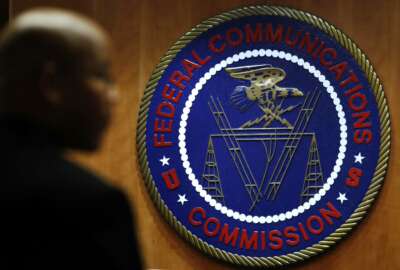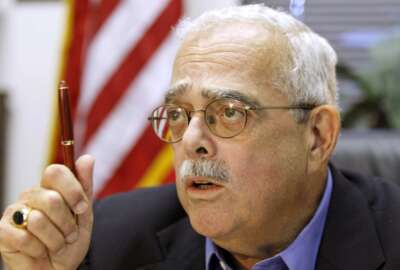
Are you and your fellow feds red, blue or puce?
The federal family of working civil servants, retirees, spouses, friends and family is old enough to vote, and with many good reasons to vote.
Any way you slice it, the federal family of working civil servants, retirees, spouses, friends and family is huge.
It is also very well-educated and spread throughout the country. Everybody’s old enough to vote, and with many good reasons to vote.
Think about it: The president is more than POTUS; he is also feds’ CEO. And members of the House and Senate “represent” them but also act as their hard-line board of directors. And both Congress and the White House are seriously looking for ways to cut the payroll of both bodies and costs.
They are looking at changes that would have a lifetime — and not good — impact on both current workers and current and future retirees.
To some politicians you, wherever-you-are — and not just us here Inside the Beltway — also represent the swamp-that-must-be-drained. That is, unless maybe they know you are living, working, spending and voting in their back yard.
Federal/postal workers are a major factor in California, Texas, Florida, Georgia, Alabama, Illinois, Washington state, Colorado, Pennsylvania, New York, North and South Carolina, Oklahoma, West Virginia, Nevada, Arizona, New Mexico, Ohio, etc.
In many communities the local Veterans Affairs hospital, postal processing facility, federal prison, military installation or IRS center is the primary employer. Some places have all of them. They are true federal centers.
Ogden, Utah, is fedtown U.S.A. thanks to the huge presence of the IRS, the Air Force and the Department of the Interior. Huntsville, Alabama, is also a federal city — a miniature D.C. in some respects. And of course there is metro Washington, D.C., including Maryland — can you say Baltimore and Social Security — and Northern and Tidewater, Virginia, which is home to about 14 percent of the total workforce.
Feds are a big deal all over, except maybe Vermont. Although, there is that major VA facility in Burlington, but you get the idea.
So what are the federal establishment’s politics? Does it have any? Do feds vote Democratic, as most federal postal unions think and hope, or are the majority Republicans or independents?
Do people vote based on where they work and what they do, with the Environmental Protection Agency and the Department of Housing and Urban Development leaning Democratic, and with the Defense and Homeland Security departments home to a majority of Republicans? Do Southern feds vote differently than their colleagues in the Northeast, and do feds doing the same jobs for the same agencies in California and Arizona vote the same way?
Who knows? You, probably, so let’s find out:
Check out this email from a retired fed, identified as William F., who thinks most of his current and former comrades are Republicans. So what do you think?What do you know, think you know or feel? Here’s what he said:
“I know more than 25 federal workers currently and far more over my career. I would estimate it’s 80-20 percent Republican. A few refuse to discuss politics. During the 2016 campaign, all but two of the current folks voted for someone other than Trump. Four admitted support for Clinton. The reason: they predicted an America like the one we now have.
“They felt that Trump was the most dishonest, unqualified person to run and no good could come from his ascendancy to the Oval Office. I am pro-Democrat normally, but voted for Clinton as a defensive or protest against Trump.
“These people were right. Fox News is setting policy objectives, democracy and the rule of law are nearing life support, corruption is stunningly rampant and Washington seems unconcerned. If we survive, Republicans are losing persons my son’s age [of 20]. It will take generations to recover from the damage Trump is doing today.”
Nearly Useless Factoid
By Amelia Brust
It was only in the last few hundred years that North was consistently placed at the top of maps. Map historian Jerry Brotton of Queen Mary University in London said this was because “north is where darkness comes from,” while East was the preferred cardinal direction for ancient Egyptian and early Christian maps.
Source: BBC
Copyright © 2025 Federal News Network. All rights reserved. This website is not intended for users located within the European Economic Area.
Mike Causey is senior correspondent for Federal News Network and writes his daily Federal Report column on federal employees’ pay, benefits and retirement.
Follow @mcauseyWFED





